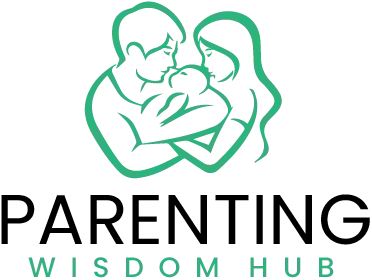Introduction
Parenting is difficult yet rewarding. Finding successful parenting strategies may help new and experienced parents maintain peace and build their families. The Nacho Parenting Method is known for its creative approach. This blog article will discuss Nacho Parenting and provide insights, techniques, and real-life examples to help you master it and improve your family.
What is the Nacho Parenting Method?
Respect, rules, and good feedback are important parts of the Nacho Parenting Method. Traditional parenting methods often rely on strict rules and punishment. Nacho parenting, on the other hand, promotes a more balanced and understanding approach. As in saying “That’s nacho business” in a lighthearted way, the word “nacho” comes from the idea of not getting too involved in things that aren’t directly your duty.
The Philosophy Behind Nacho Parenting
Nacho parenting is all about making sure kids live in a healthy place where they feel loved and respected. It tells parents to take a back seat and let their kids learn from their mistakes while still being there for them when they need it. The goal of this method is to make a safe and happy space that helps people feel better and grow as people.
Benefits of Nacho Parenting
Empathy and Understanding
One of the best things about Nacho Parenting is that it helps kids understand and empathize with others. Parents can build better, more trusted ties with their kids by following their limits and giving them room to say what they want.
Conflict Resolution
Nacho parenting can also help you settle disagreements better. Parents shouldn’t force answers on their kids; instead, they should push them to think critically and come up with their own. This helps them learn how to solve problems and avoid power battles.
Emotional Resilience
When children are raised using the Nacho Parenting method, they often become more emotionally strong. They learn how to deal with problems and failures in a healthy way, which gets them ready for the complicated life of an adult.
How to Implement Nacho Parenting
Setting Boundaries
A very important part of Nacho Parenting is setting clear limits. Parents need to teach their kids what is and isn’t okay to do, but they also need to respect their kids’ privacy and independence.
Encouraging Independence
Another important part is promoting freedom. Let your kids choose what to do and be responsible for what they do. They will feel more confident and learn how important it is to be responsible.
Positive Reinforcement
When you use Nacho Parenting, positive feedback is one of your strongest tools. Focusing on punishing bad behavior is not as important as focusing on praising good behavior. This makes the setting more inspiring and exciting for kids.
Common Misconceptions About Nacho Parenting
It’s Too Lenient
A common misunderstanding is that Nacho parenting is too easy on kids. On the other hand, this method isn’t about giving kids free reign. It’s about giving kids freedom and duty at the same time, being there for them but letting them learn from their mistakes.
It Doesn’t Address Discipline
Another false belief is that Nacho Parenting doesn’t talk about punishment. By making clear limits and using positive rewards to encourage good behavior, it actually brings in discipline.
It’s Only for Young Children
Some people think that Nacho parenting is only good for kids that are very youThiss method can be changed to work for kids of all ages, from babies to teens.
Practical Tips for Nacho Parenting
Be Consistent
In Nacho Parenting, consistency is very important. Make sure that the rules and limits you set are fair and clear. This makes things clearer for kids and helps them know what’s expected of them.
Communicate Openly
Open conversation is very important. Encourage your kids to talk about how they feel and what they think, and pay attention when they do. This makes your relationship stronger and builds trust.
Lead by Example
Lots of the time, kids learn by watching their parents. You can teach your kids the right way to behave and think by showing them how to do it yourself.
Real-Life Examples of Nacho Parenting
The Story of Emily and Jacob
Emily and Jacob had two young children, and they were always fighting with their kids about chores and homework. They noticed a big difference in how their family worked after they started using the Nacho Parenting method. Their children took on more responsibility, and they encouraged open conversation. This helped them avoid arguments and make their home a better place to live.
Sarah’s Experience with Teenagers
Sarah, who had two kids, had a hard time setting limits and keeping control. The methods she used from Nacho Parenting helped her teens become more responsible and independent. Giving her kids the freedom to make their own choices and learn from their mistakes helped her build a stronger bond of trust and respect with them.
Challenges of Nacho Parenting and How to Overcome Them
Resistance from Children
Children may not want to follow Nacho parenting, especially if they are used to a more traditional way of parenting. It’s important to be gentle and steady as you slowly teach your child essential-renting ideals.
Balancing Freedom and Responsibility
It can be hard to find the right mix between freedom and duty. Make sure everyone knows what you expect from them, and when they give advice without micromanaging.
Staying Consistent
It can be hard to be consistent, especially when your home is very busy. To make sure everything stays the same, try to stay prepared and remember the rules and boundaries you’ve set.
Integrating Nacho Parenting with Other Methods
Positive Parenting
Positive parenting and Nacho parenting can work together without any problems. Respect, understanding, and positive feedback are important parts of both methods. This makes them perfect for making a caring and helpful workplace.
Gentle Parenting
The main idea behind gentle parenting is to understand and meet your child’s wants with kindness and care. When you combine this method with Nacho parenting, you can help your family have a peaceful and mentally healthy relationship.
Authoritative Parenting
Setting clear rules and keeping a warm and loving relationship with your kids is part of authoritative parenting. Adding Nacho Parenting ideas can make this method better by pushing kids to be independent and think critically.
Conclusion
The Nacho Parenting Method is a novel and successful way to raise children in a loving home. This approach builds trusting connections and emotional resilience in children via respect, limits, and positive reinforcement. Nacho parenting may improve your family’s interactions and well-being, whether you’re a beginner or an experienced parent.
Ready to advance your Nacho Parenting Method? Explore additional resources, join parenting groups, and keep studying to give your kids the greatest start. Happy parenthood!


